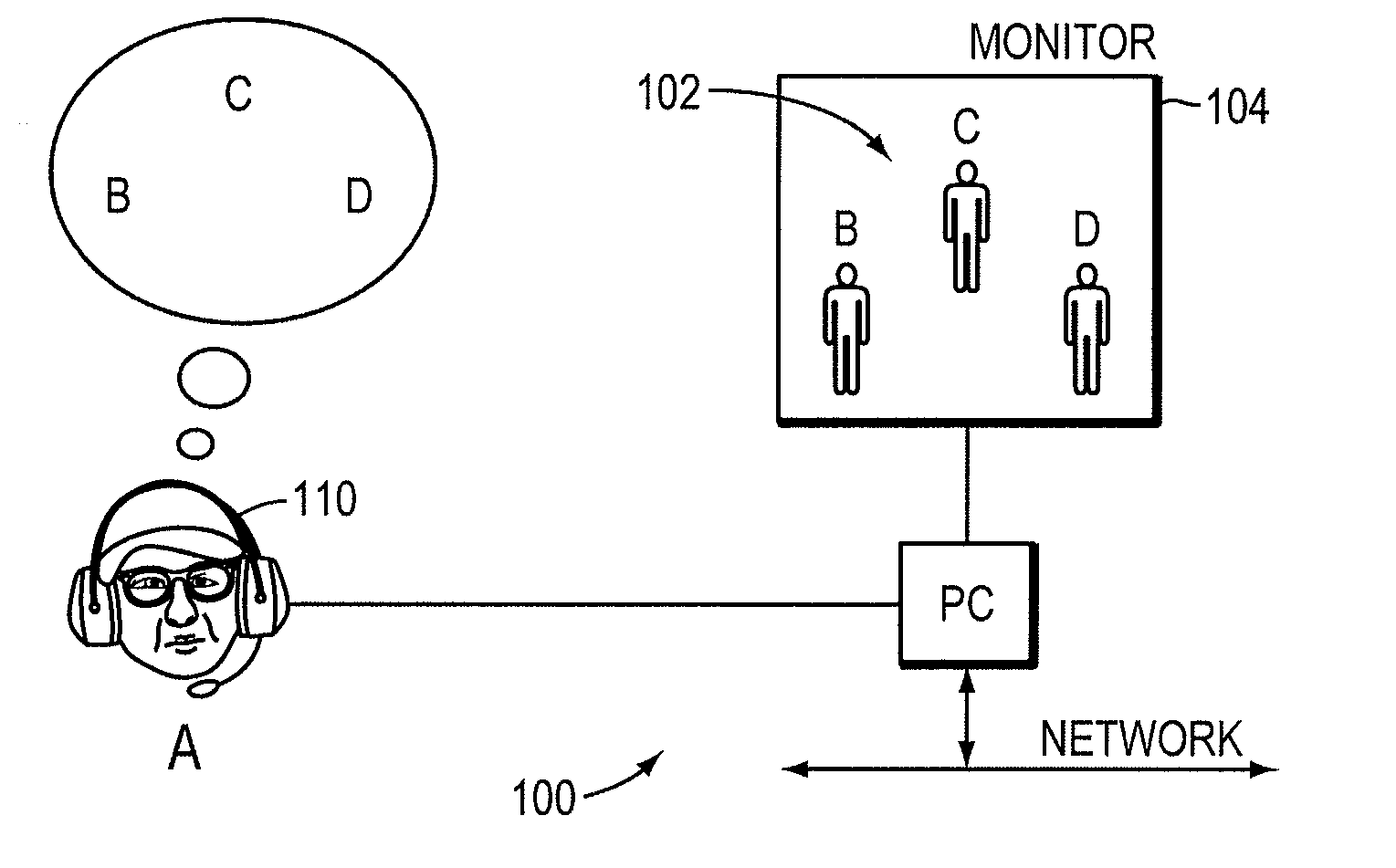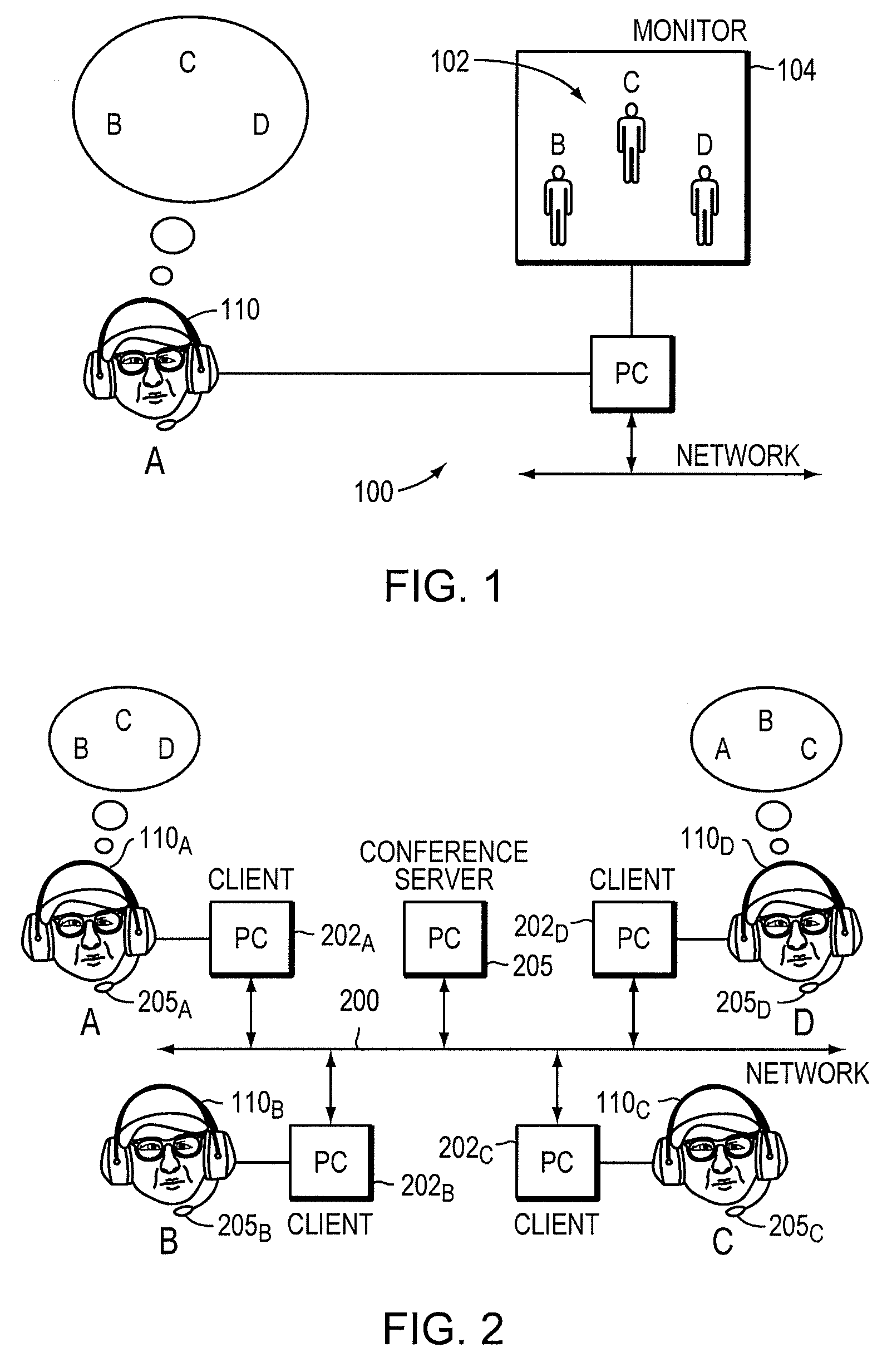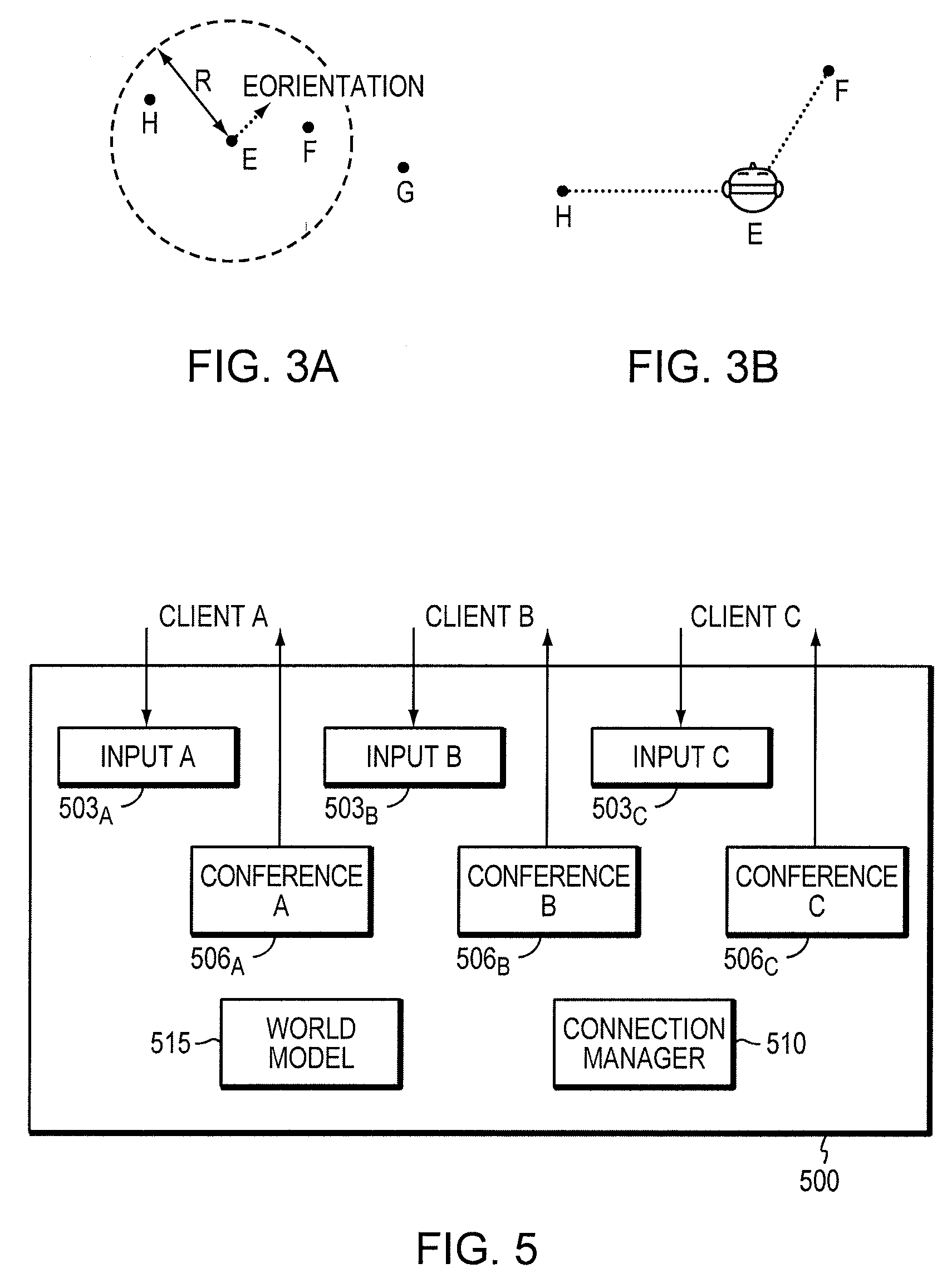Spatial audio teleconferencing
a technology of audio teleconferencing and satellite, applied in the field of satellite audio teleconferencing, can solve the problems of difficult identification of talkers, loss of intelligibility, and difficulty in teleconferencing using monaural audio reproduction
- Summary
- Abstract
- Description
- Claims
- Application Information
AI Technical Summary
Benefits of technology
Problems solved by technology
Method used
Image
Examples
Embodiment Construction
Brief Summary
[0008]Embodiments of the present invention allow participants in a networked virtual world to converse naturally as in a real-life situation. Each participant can hear “nearby” participants localized according to their positions in the virtual world, desirably with reverberation and environmental audio effects derived from properties of the virtual world. From a conferencing point of view, this strategy achieves the well-known communication benefits of spatial conferencing over monaural conferencing. From an experiential point of view, the invention integrates natural conversation into a virtual world, and provides 3-D audio and environmental audio effects so the conferencing aspect of the virtual world is fully integrated with the other sounds of the world.
[0009]Importantly, embodiments of the invention can handle a large number of simultaneous participants. This is possible because each participant need only converse with a relatively small number of proximate partici...
PUM
 Login to View More
Login to View More Abstract
Description
Claims
Application Information
 Login to View More
Login to View More - R&D
- Intellectual Property
- Life Sciences
- Materials
- Tech Scout
- Unparalleled Data Quality
- Higher Quality Content
- 60% Fewer Hallucinations
Browse by: Latest US Patents, China's latest patents, Technical Efficacy Thesaurus, Application Domain, Technology Topic, Popular Technical Reports.
© 2025 PatSnap. All rights reserved.Legal|Privacy policy|Modern Slavery Act Transparency Statement|Sitemap|About US| Contact US: help@patsnap.com



